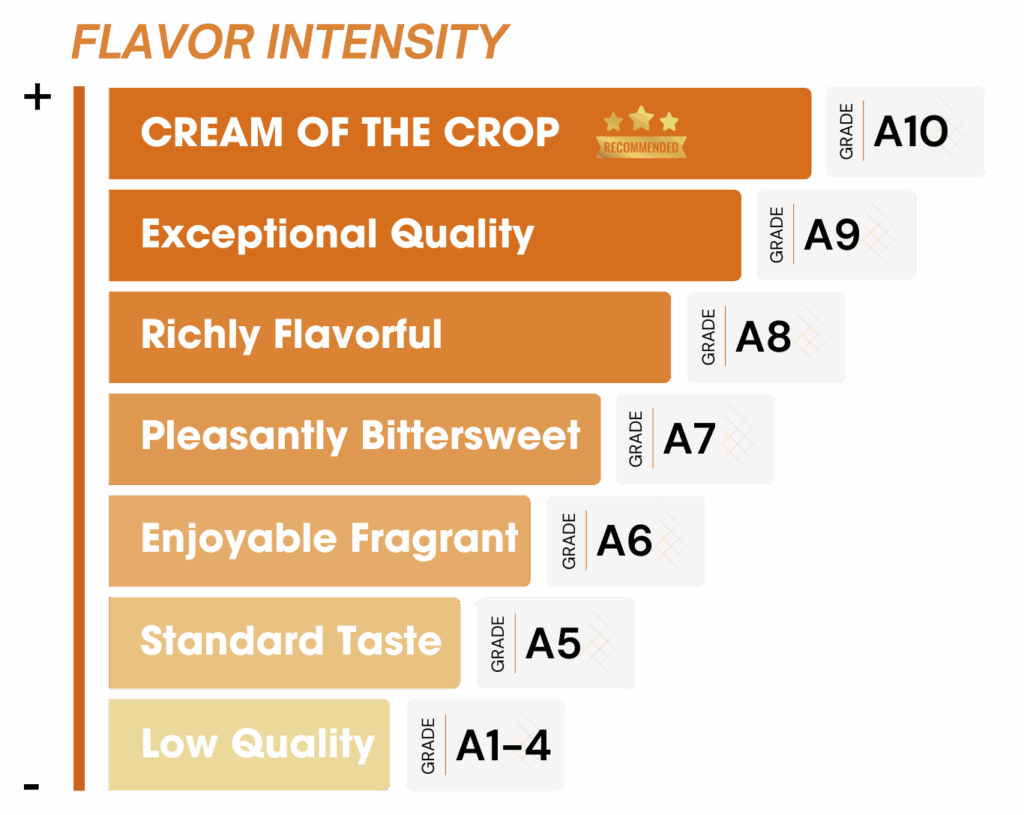2 Hour Islandwide Delivery

Free Delivery Above SGD100

Free Replacement Guarantee

The People’s Choice for Premium Durian. Share your delicious story with us!

Durians are known for their unique and intense aroma, which is often described as a combination of sweet, savory, and sometimes sulfurous notes. What contributes to the flavor and fragrance of the durians are a variety of volatile compounds. These compounds include esters, ketones, alcohols, and sulfur-containing compounds. Here’s a breakdown of the key volatile compounds(VOCs) that contribute to the characteristic flavor and aroma of durians:
In general, the higher the DFI means higher concentrations of volatile organic compounds (VOCs) in durians result in a stronger and more intense flavor. However, the enjoyment of this flavor is subjective and depends on individual preferences
Don’t worry! That’s where we step in! Our Durian Flavor Index is based on the concentration of VOCs. The higher the grade(A10), the higher the VOC concentration.
How do we know this?
Many factors contribute to the concentration of VOCs, especially climate and cultivation practices. Ideal temperatures (24°C to 30°C), well-distributed rainfall with a dry period for flowering, balanced humidity, and rich, slightly acidic, well-drained soils provide essential support for tree health and fruit development.
Adequate sunlight promotes photosynthesis, while advanced agricultural practices like pruning, fertilization, irrigation, and pest control enhance fruit quality. Additionally, specific durian varieties adapted to local conditions exhibit genetic differences that affect VOC production. Together, these factors ensure healthy trees and higher VOC concentrations, resulting in better-tasting durians.
In Malaysia, Penang is renowned for producing the best durians, with varieties like Musang King and D24 praised for their strong, complex flavors and creamy texture. The consistent tropical climate and advanced cultivation techniques in Penang contribute to their superior quality. Pahang and Ipoh are also known for high-quality durians, but they generally do not match the exceptional standards of Penang. However, the durians from Pahang and Ipoh are considered better than those from Johor, which, despite producing good durians, do not achieve the same level of acclaim as those from Penang, Pahang, or Ipoh. This hierarchy of durian quality underscores the importance of regional differences in climate, soil conditions, and cultivation practices, resulting in the diverse flavor profiles of durians across different regions.